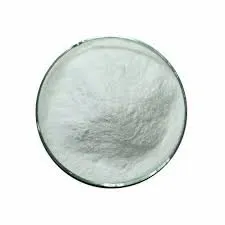
Dec . 09, 2024 16:10 Back to list
mhec-methhyl hydroxyethyl cellulose manufacturer
The Role of Methyl Hydroxyethyl Cellulose in Various Industries A Focus on Manufacturers
Methyl Hydroxyethyl Cellulose (MHEC) is a versatile cellulose derivative that has gained significant traction across multiple industries due to its unique properties. As a water-soluble polymer, it is primarily valued for its thickening, binding, film-forming, and stabilizing capabilities. With a diverse range of applications, understanding the role of MHEC and its manufacturers can provide insight into the effectiveness and efficiency of various products we encounter daily.
What is Methyl Hydroxyethyl Cellulose?
Methyl Hydroxyethyl Cellulose is derived from cellulose, which is a natural polymer obtained from cotton or wood pulp. The chemical modification process involves methylation and hydroxyethylation, resulting in a compound that enhances the properties of the original cellulose. MHEC is known for its high solubility in water, making it an essential ingredient in many formulations.
Its unique attributes include
1. Thickening Agent MHEC increases the viscosity of aqueous solutions, making it ideal for paints, adhesives, and food products. 2. Film-Forming Agent Its ability to form flexible films allows it to be used in coatings, personal care products, and pharmaceuticals. 3. Stabilizer It stabilizes emulsions, preventing separation in products like creams and lotions. 4. Binder MHEC acts as a binding agent in construction materials, ensuring that components adhere effectively.
Applications of MHEC Across Industries
The versatility of MHEC has led to its widespread use in various sectors
1. Construction In construction, MHEC is crucial in the formulation of cement-based materials, tile adhesives, and sealants. Its water retention properties improve adhesion and workability, making it easier for professionals to apply these materials.
mhec-methhyl hydroxyethyl cellulose manufacturer

2. Food Industry MHEC serves as a thickener in food products, contributing to texture and mouthfeel. From sauces to dressings, it helps maintain product consistency while enhancing shelf life.
3. Pharmaceuticals In the pharmaceutical industry, MHEC is employed as a binder and coating agent for tablets and capsules. Its non-toxic nature and biocompatibility make it a preferred choice for drug formulations.
4. Personal Care Products MHEC is widely used in shampoos, conditioners, and skin care formulations. Its thickening properties ensure a pleasant user experience while providing stability to the product.
5. Paints and Coatings In paints, MHEC acts as a thickener and helps regulate the application properties of the product, leading to better finish and durability.
The Importance of MHEC Manufacturers
Manufacturers of MHEC play a pivotal role in ensuring the quality and consistency of this crucial ingredient. They are responsible for sourcing high-quality cellulose and implementing precise chemical modifications to produce MHEC that meets industry standards. Quality control measures are essential throughout the manufacturing process to ensure that the final product maintains the desired properties and functions effectively in its applications.
The rise of green chemistry has also influenced MHEC production. Many manufacturers are now focusing on sustainable practices by sourcing raw materials from renewable resources and minimizing waste during production. This shift not only supports environmental conservation but also meets the increasing consumer demand for sustainable products.
Conclusion
Methyl Hydroxyethyl Cellulose is an indispensable component in a wide range of industries. Its multifunctional properties make it a go-to ingredient for manufacturers looking for reliable solutions in their products. As consumer awareness regarding sustainability continues to grow, MHEC manufacturers who prioritize eco-friendly practices will likely gain a competitive edge. The ongoing research and development in this field also promise to open up new applications and enhance existing formulations, ensuring that MHEC remains a valuable asset in various markets for years to come. As we move towards a more sustainable future, the role of METHC and its manufacturers will undoubtedly continue to evolve, adapting to the changing needs of industries and consumers alike.
-
Unlocking the Benefits of HPMC Products: A Gateway to Versatile Applications
NewsAug.07,2025
-
Unleashing the Potential of HPMC Ashland: A Comprehensive Look
NewsAug.07,2025
-
Tile Bonding Cellulose: The Key to Superior Adhesion and Durability
NewsAug.07,2025
-
Hydroxypropyl Methylcellulose Powder: The Versatile Component in Modern Pharmaceuticals
NewsAug.07,2025
-
Hydroxyethyl Cellulose: The Versatile Solution for Various Industries
NewsAug.07,2025
-
Hydroxyethyl Cellulose (HEC): The Versatile Polymer for Various Applications
NewsAug.07,2025







